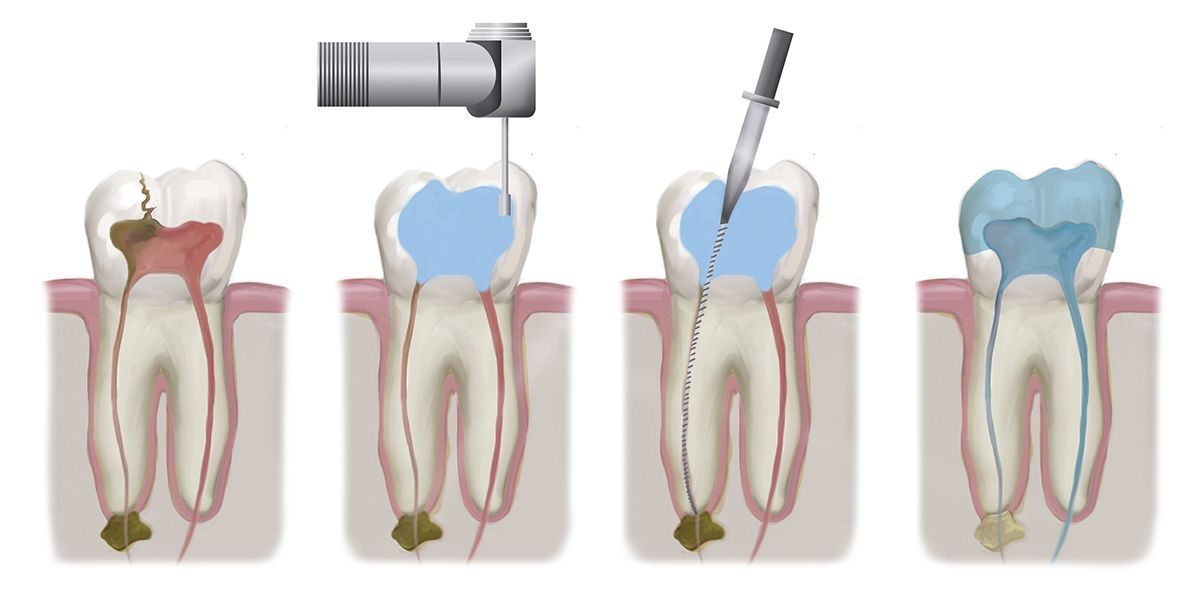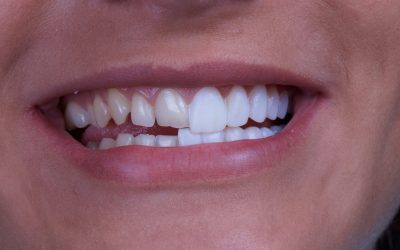We can briefly answer the question of why root canal treatment is performed as follows: Root canal treatment is applied to save decayed or infected teeth. If there is a gap in the hard tissue of the teeth. This is called the ‘root canal’. The soft tissue located in that space is called pulp. During root canal treatment, the tooth nerve and pulp tissue are removed and the inside of the tooth is cleaned. Then the empty part is filled and the operation is completed. Treatment of teeth must be carried out on time. Otherwise, they get worse and cause inflammation in the nerves. This will cause the patient to suffer from unbearable toothache.
Root canal treatment is aimed at stopping the progression of dental caries and infection. Removal of the dental nerve during the operation does not cause any harm to the person. Because this sensory nerve is not of vital importance for the function and health of the teeth. It only serves to detect cold and heat. If root canal treatment is not done on time, the tissue around the tooth becomes infected. Therefore, situations that require root canal treatment should not be neglected.
Inflammation may develop or inflammation may occur in the pulp tissue due to microorganisms. Cavities or trauma can damage the root of the tooth. The procedure known as root canal treatment is applied to repair, reconstruct the area, and prevent tooth loss. Thus, it is possible for the tooth to fulfill its old functions in a healthy way and to remain active in the jawbone as before. The fillings used at this time are fully compatible with the tissues in and around the teeth.
In which situations is root canal therapy applied?
The purpose of root canal treatment; is to prevent the passage of substances from the mouth to the root of the teeth and vice versa from the tip of the root to the mouth.
why root canal treatment is applied?
the following conditions can be listed as an answer to the question:
- Deepened dental caries
- Damage to the pulp or dental nerve
- Teeth damage caused by trauma in the facial area, fractures or cracks in the teeth, toothache related to this
- Abscesses and infections in teeth
What are Root Canal Treatment Methods?
This treatment can be applied by an endodontist or dentist. The first step is to take an X-ray and look at the condition of the root canals.
The dentist examines the shape of the channels through this film. Since it checks for signs of infection in the bones surrounding the area.
The next procedures are as follows:
- With the help of local anesthesia, the tooth is anesthetized. (Anesthesia may not be needed if the dental nerve has already lost its vitality.)
- The teeth are covered with a layer of rubber. The purpose of this is to keep that area dry until the treatment process is over and to prevent it from getting wet with saliva.
- A hole is drilled into the root canal.
- By entering through this hole, the pulp, decaying nerve tissue, and harmful bacteria are cleaned. Meanwhile, root canal fillers are used.
- Fillers are produced in different diameters. Then it is inserted into the hole one by one.
- Various micro-residues are released during this time. The doctor uses sodium hypochlorite or water to cleanse them from the tooth.
- The opened hole is closed after the inside of the tooth is well cleaned.
How Long Does Root Canal Treatment Take?
The answer to this question depends on how many root canals a person has. In addition, the degree of infection and the cleaning process of the nerves also affect the duration of the operation.
If additional procedures are needed, the treatment time will be extended. For example; procedures such as veneer or dental crown can be applied. Your doctor will inform you about this in advance.
On average, the duration of root canal treatment is between half an hour and one and a half hours. Sometimes it may be necessary to divide the application into several sessions. In this case, the duration of treatment is up to 1 week.
For example, if an infection is encountered in the teeth, it will be necessary to wait for a week. Because medicine will be placed there to clean the tooth. A waiting period of 1 week is required before closing the tooth.
If this is not the case, closure can be started immediately after tooth cleaning.
Finally; When it comes to closing the tooth, a paste called gutta-percha is used. This material placed inside the hole provides protection against leakage. The hole opened at the beginning of the treatment is closed with a permanent filling and the operation ends.
Will There Be Pain After Root Canal Treatment?
After root canal treatment, the pain is not severe. Since this operation is performed under local anesthesia, it is not painful. But after the procedure, there is not much pain. However, some sensitivity and pain after the filling may occur. Therefore, root canal treatment also causes some pain.
Sensitivity is observed in the area tissue in the first 3-4 days. It is sufficient to use an over-the-counter pain reliever to relieve this pain.
Things to Consider After Root Canal Treatment
What should be considered after root canal dental treatment?
you should know that you should take care of:
- If you have a temporary filling placed, do not eat with that side of your mouth until your treatment is finished. Otherwise, your tooth may be damaged or the inside may become dirty.
- Use the antiseptic mouthwash recommended by your doctor regularly.
- Brush your teeth at least 2 times a day. Be sure to be gentle while doing this. Perform the brushing process in circular motions.
- Avoid biting shells and hard foods until your treatment is over.
- If your doctor has recommended antibiotics, sprays, or pain relievers, use them in the specified dose and amount.
- Take a break from chewing gum, candy, and similar products that stick to the teeth.
- Consume less sugary foods during the recovery period.
- Clean between your teeth thoroughly using dental floss once a day. This is extremely important to avoid infection.
- Do not use alcohol and cigarettes. These may adversely affect the success of treatment and delay recovery.
- Do not delay your annual dental check-ups.





